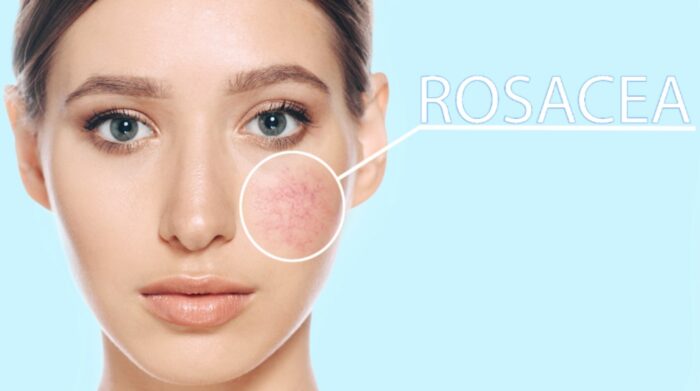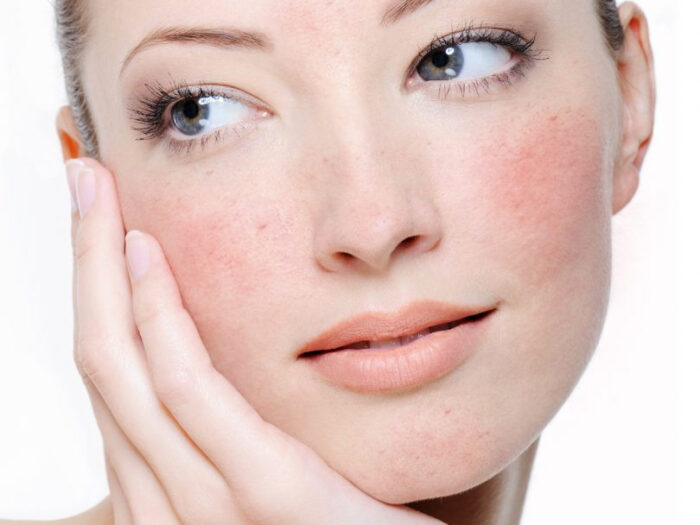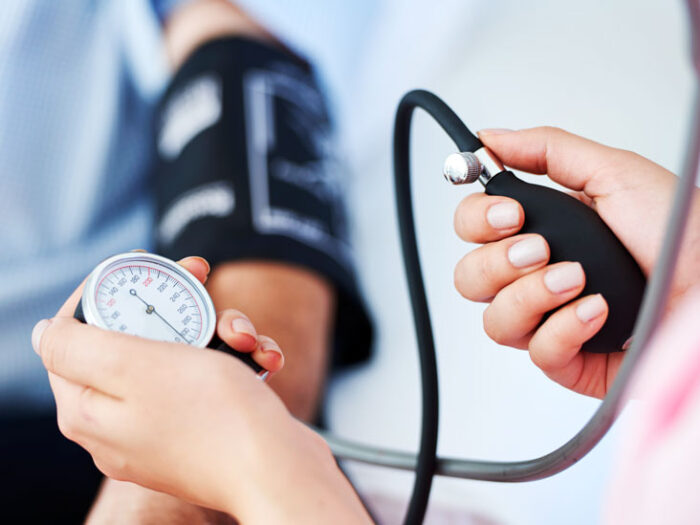
Your face is your calling card, and almost all of us want a glowy, beautiful face that will make us feel confident.
One problem that can leave you looking and feeling uncomfortable is a red flush across your face, especially your cheeks.
Having a red face is often thought of as a sign of embarrassment, but there are many reasons why your cheeks could glow a reddish hue.
Some reasons are perfectly innocent, such as being out of breath from a brisk walk, while others are more serious and might require treatment.
While blushing can be endearing at times, it’s not ideal if your face is constantly flushed red, as it can make you look and feel self-conscious.
There are many small, minor issues that can cause blushing and facial redness, including being too hot, drinking too much alcohol, or having a reaction to some medications.
However, a red face can also be a symptom of a serious medical condition, so you need to make sure that you work out what’s going on, particularly if the redness doesn’t go away when the temperature cools down or after you stop drinking alcohol.
If you find that you regularly get a red face and don’t know what to do about it, then you need to understand why your skin is going red.
Here are some of the primary causes of a red face and practical tips on how you can get your glowy complexion back in no time.
Rosacea

One of the most common causes of a red face is Rosacea, a condition where the face flushes red, and the skin becomes unnaturally dry. The exact causes of the issue are unknown, but there are some creams that can help to reduce the redness and get your skin back to its usual brilliance.
There are also dietary changes you can make to potentially reduce the symptoms of Rosacea. The condition can be easier to notice on lighter skin, and the rash usually occurs across the nose and cheeks. If you’re unsure if you have Rosacea, then speak to a doctor or pharmacist who can check and advise you on how to manage the condition.
Psoriasis
Similar to Rosacea, Psoriasis also causes red, scaley skin, both on the face and body. Psoriasis is usually found on multiple areas of the body, whereas Rosacea is usually confined to the face.
So, if you notice that your face isn’t the only part of your body that is turning red and that your skin is becoming excessively dry and scaley, then the issue could be psoriasis. If you’re in doubt, speak to your doctor, who can identify the problem and offer you creams to treat the issue.
Psoriasis can be debilitating and cause a lot of scarring, so if you suspect it, then immediately ask your doctor for more advice.
Lupus

While red cheeks can be an innocent issue, they can also be a sign of something more serious, such as an autoimmune disease. Autoimmune diseases occur when the body’s natural defense system accidentally attacks healthy parts of the body, leading to health problems.
Conditions such as Lupus can cause a red rash on the face, often known as a ‘butterfly rash’ across the cheeks. Learn about the symptoms of Lupus to see if you have any, and speak to your doctor if you’re unsure. You’ll then be able to get the treatment you need.
Contact Dermatitis
Contact dermatitis is an issue that occurs when your skin comes into contact with an abrasive substance or one that it is allergic to. The condition is a form of eczema and is often found on the face as a result of using skincare products that contain harsh chemicals.
So, if you notice that your skin goes red after using a specific product, then consider removing it from your skin care regimen to see if that gets rid of the redness. If it does, then make a note of the ingredients and ensure that you always buy products that don’t contain them. Usually, these ingredients are harsh, manmade chemicals, so try to find natural products that will invigorate your skin.
Hives

Another sign of a potential allergic reaction is hives, which can affect the entire body but are often first noticed on the face. Hives are often triggered by allergens in the environment around you, such as pollen. They can also be caused by eating foods that you’re allergic to or taking the wrong medication.
While redness is one symptom of hives, the condition also causes your skin to become raised and itchy, so if you don’t have these symptoms, then the condition is probably not hives. If your skin is raised, itches a lot and feels bumpy, then this is a sign that you have hives. Hives are caused by the release of histamine, a chemical designed to combat allergens.
So, if you notice hives on your face and body, try taking an antihistamine or try to stop coming into contact with the allergen. That isn’t always possible, particularly if the cause of the problem is hay fever, as pollen in the air can be tough to avoid. However, if the issue is caused by something you ate or took, then you can usually resolve the problem by avoiding this product in the future. The hives will usually go down over the coming days and disappear entirely after around a week.
High Blood Pressure
A ruddy face can be a sign of high blood pressure, particularly if you get a red face in conjunction with other common symptoms of hypertension.
While high blood pressure can be symptomless, there are some common health problems that are associated with it. These symptoms include:
- Regular nosebleeds
- Dizziness and headaches
- Blurred or double vision
- Shortness of breath
If you notice these symptoms, then see your doctor immediately to check your blood pressure. If it is high, then it can usually be treated with lifestyle changes, such as reducing your intake of red meat, dairy products, and alcohol.
There are also medications that can help. Working to reduce your blood pressure before it causes serious health problems will save you hassle in the long run, so it’s worth checking if you think yours might be high.

Menopause
For women, a red face could be a sign that you’re starting menopause. Menopause is when your body’s estrogen levels get lower, which means you stop menstruating. While some women experience few to no symptoms of menopause and hardly notice a change except the lack of periods, others experience a range of issues, including ‘hot flashes’ or facial reddening.
A red face from menopause will usually resolve itself in time, but if you’re unsure or you’re having other, more severe symptoms, then your doctor will be able to advise you and find you an appropriate treatment.
What To Do If The Redness Persists
If you notice redness occasionally on your face, then consider adjusting your diet, drinking less alcohol, or reviewing your skincare regime. If the problem persists, then you should visit your doctor or pharmacist to check that the issue isn’t more serious.
They can help you to identify the problem and get the right treatment. This article should help you to narrow down the issue and attend your doctor’s appointment informed about the causes of facial redness. By being proactive and understanding the cause of the redness, you can get yourself back to the naturally beautiful complexion you want.








